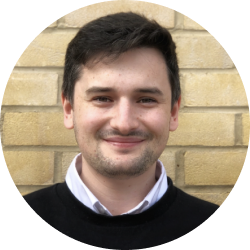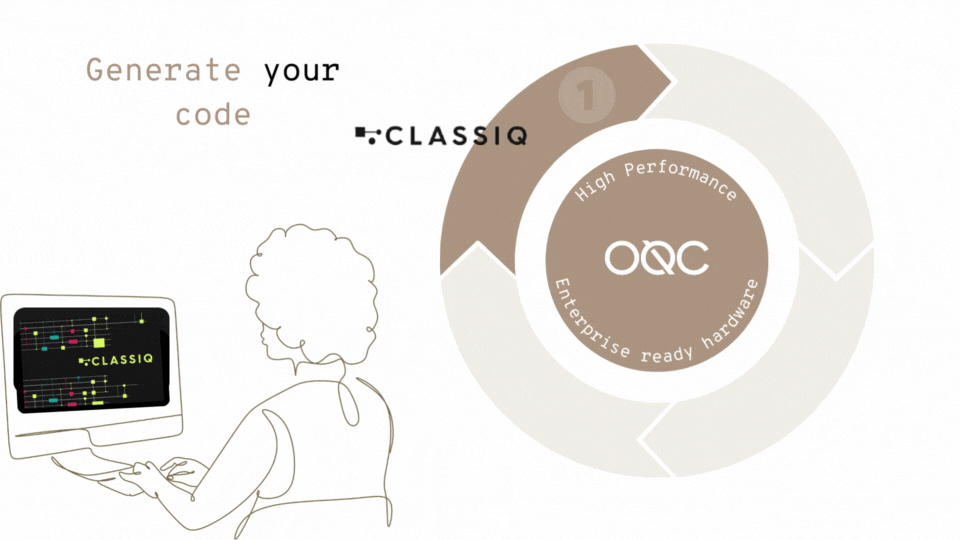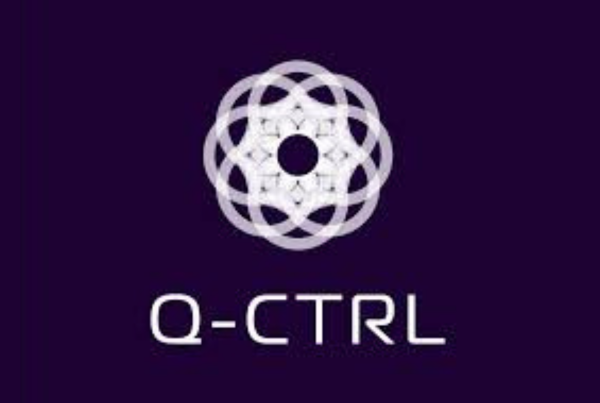
QUICKBITS
The power of collaboration in quantum computing

Jamie Friel
TECHNOLOGY MANAGER: QUANTUM THEORY
Jamie is responsible for building software solutions that will help build a quantum future. In particular building a bespoke quantum compiler that will allow groundbreaking problems to be solved on OQC’s hardware. Before joining OQC, Jamie worked as a software developer for a grid battery company, part of the UK’s national grid goal to bring greenhouse gas emissions to net zero by 2050.

Our primary objectives at OQC have always been to break down the barriers to access, and to provide powerful base quantum computing hardware, enabling our customers to engage, learn and integrate this pivotal technology into their workflows. We are already empowering companies to achieve tangible outcomes and now we are eager to harness the full potential of our computers, guaranteeing you a smoother and more user-friendly quantum computing experience.
Build the core; partner with the best
Just as classical computing requires the collective effort of diverse teams and specialisations, quantum computing necessitates a collaborative approach. This trend will only increase as we seek ever greater specialist skills and functions to make better quantum processing units. At OQC, we have long recognised these realities and have worked across our stack with numerous vendors, suppliers, contractors and specialists to obtain our next big leaps.
We’d like to introduce the CLassiq Oqc CudaQuantum Q-ctrl (CLOQC) partnership, a huge step towards improving scientific productivity and enabling scalable quantum research. Our recent collaboration with Q-CTRL, Classiq and NVIDIA demonstrates that the true power of innovation resides in the convergence of diverse perspectives and expertise. By fostering an environment where collaboration thrives, we forge invaluable connections that propel humanity forward. At OQC, we believe deeply in this fundamental principle, and it is one of our guiding principles: “Build the core; partner with the best.”
Debugging quantum code
Similar to classical programming, it is crucial to ensure that quantum programs function as intended and can diagnose incorrect behaviour. However, unlike classical programming, analysing and validating quantum code is a difficult algorithmic problem. We are partnering with Classiq to leverage their expertise. With Classiq, we can synthesise circuits relevant to OQC hardware using constraints and debug outputs.
In order to undertake algorithmic research and construct applications that pave the way for future quantum advantage, the utilisation of an intermediary and hybrid approach can be crucial. Variational quantum Eigensolvers are perhaps the most famous quantum-classical hybrid algorithm. For these, we need to couple an ansatz executed against our quantum processing unit (QPU) with a classical optimiser. We need to be able to handle generation of instructions and sequencing of these instructions across architectures, starting with a common language. This transition has to be simple and seamless, providing end users with ease and adaptability in their quantum computing journey. To provide you with a more seamless and simple quantum-classical journey, we are collaborating with NVIDIA.
Augmenting applications with quantum capabilities
Using NVIDIA CUDA Quantum — an open-source platform for integrating and programming QPUs, GPUs, and CPUs in one system — furthers our mission to break down the barriers to access. NVIDIA’s technical expertise empowers the entire ecosystem of frameworks and applications, further enhancing performance. NVIDIA has developed a unified programming model (classical, quantum) around standard C++ with additional blocks for QPU kernel-specific code. This is ripe for the fields of HPC-enabled scientific discovery and simulation.
Revolutionising algorithmic performance
A year ago, we launched OpenPulse, for Braket and across all of our public-facing systems, as we wanted to enable technical users to unlock a new approach to manipulating and calibrating qubits. This gives our users full control of the manipulation and readout operations directly at the microwave pulse level and is complementary to gate based algorithms, which we also support. Now we are leveraging that capability for Q-CTRL.
We partnered with Q-CTRL because their error suppression software builds off our existing work and calibrations and further reduces errors. This means users can improve their results when running quantum algorithms. By combining Q-CTRL’s error suppression software with our unique Coaxmon technology, we see the potential for significant advancements in enhancing algorithmic performance for quantum developers, researchers, and enterprise end-users by addressing the challenges of running complex algorithms on quantum hardware.
The collaboration between Q-CTRL and OQC has already yielded promising initial results . Improvements in accuracy have been observed by employing a subset of Q-CTRL’s error suppression technology on OQC hardware. The performance improvement factor increases with the complexity of algorithms, even when benchmarking algorithms with inherently higher gate counts, such as the Quantum Fourier Transform (QFT).
A brighter future
These collaborations hold immense promise for the quantum computing industry. By combining our enterprise ready systems with some of the best players in the field of quantum software, we are not only demonstrating the need for different teams and specialties to come together to democratise quantum computing, but we enable previously out-of-reach outcomes by providing Enterprise Ready Quantum Solutions (ERQS).
We are working towards this entire pipeline becoming an integrated solution. If you want to join this journey, join our pilot project, get in touch.
Join our newsletter for more articles like this
By clicking ‘sign up’ you’re confirming that you agree with our Terms & Conditions


